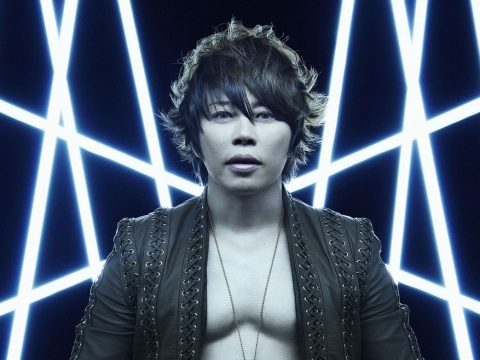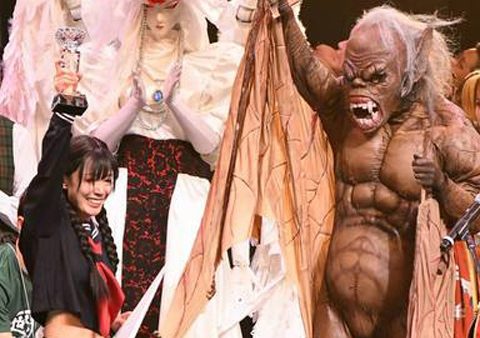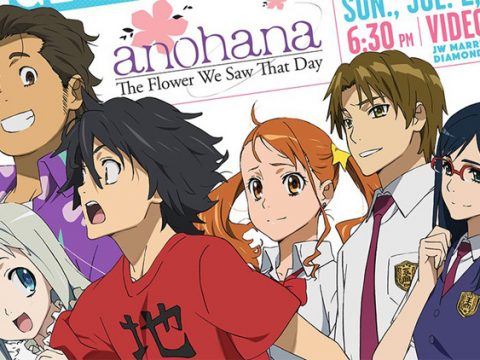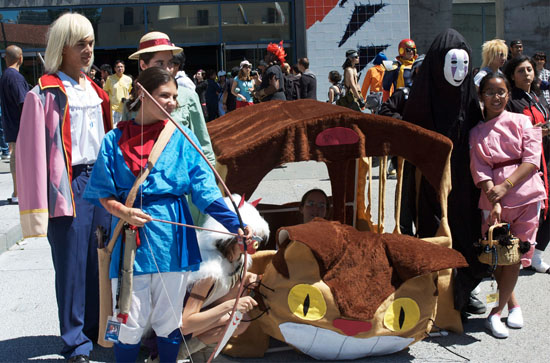
Northern California’s Bay Area was once a hot bed of anime fandom drama and in-fighting; the financial failure of AnimeCon in 1991 (the first large scale anime convention in the United States) caused the local community to splinter, leading to the creation of two new conventions: Anime Expo in 1992 and Anime America in 1993. Unbelievably, in the first year of Anime America’s operation the Bay Area hosted two large anime conventions, occuring just a week apart. Shortly thereafter, Anime Expo moved to Los Angeles and Anime America carried on in San Jose until shutting down in 1997.
The Bay Area’s convention scene has since calmed down, and FanimeCon is currently the only large anime convention held in the area. Yet, much as the AnimeCon debacle tells us about the tumultuous anime community of the early 1990s, this year’s FanimeCon tells us about the current state of anime fandom, and just how relegated anime is becoming within that community.
The first sign was this year’s guests, only one (Gainax’s Executive Director, Hiroyuki Yamaga) is directly related to the production of Japanese animation. Of the other guests, mostly voice actors and musicians, many have worked on anime titles in the past, but none specialize entirely in working with anime. The convention’s programming schedule follows this trend, with a variety of panels and events featured that have nothing to do with Japanese animation.
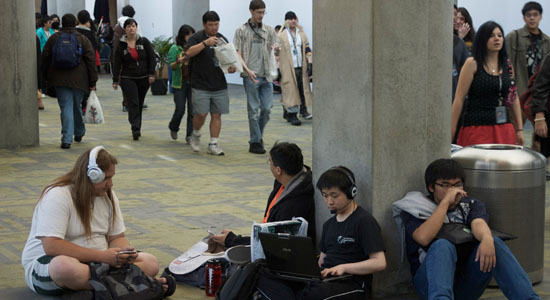
Of the four rooms used for panels, one was entirely dedicated to martial arts and weapon demonstrations. I’ve long had a theory that many cosplayers are attracted to the hobby purely as an excuse to carry around a big sword and pose like a bad ass for photographers, something clearly supported by this year’s focus on weapons-related activities.
Additionally, a large number of panels focused on video games or other aspects of Japanese culture, with some of the most popular panels at the convention dedicated to games like Gaia Online or The Legend of Zelda. That’s not to say that anime panels didn’t exist, but they were clearly not the majority. For fans old enough to remember that Gainax existed before Evangelion, Hiroyuki Yamaga’s panel on Saturday morning was the saving grace of this year’s panel lineup, despite the early time slot.
In the dealers hall, no less than three different retailers were selling prop weapons, with a similar number of retailers specializing in clothing emblazoned with Internet jokes. Other retailers sold Japanese snacks or kitschy Japanese items like kimonos and painted wall scrolls, further evidence that purchasing anime goods is no longer the sole intent of most con goers.
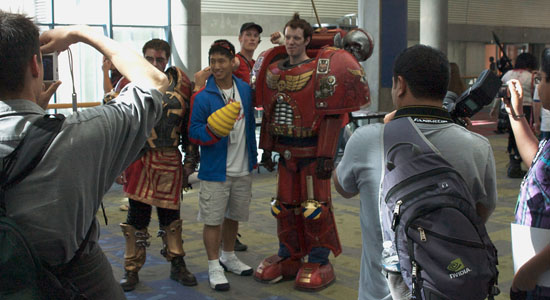
Anime still reigned at the video rooms, with five rooms showing exclusively anime and one room that showed Asian live action films. Despite a focus on newer titles, both those recently licensed or fansubbed, an entire room was dedicated to older shows like Captain Harlock, Gatchaman and Dirty Pair. Anime programming aimed at older fans seemed to meet with mixed reactions; I poked my head into a showing of the recent VOTOMS OAV, The Pailsen Files, and found the room entirely empty save for a lone viewer and a very bored staffer reading a book. On the other hand, a showing of the 1986 Fist of the North Star movie played to a large audience who seemed to enjoy themselves immensely.
Further evidence that anime was no longer the primary focus was provided by the scores of cosplayers in attendance. By my rough estimation, only about half of the cosplayers were actually dressed as anime characters, the rest based their costumes off video games, Internet memes or something else incredibly obscure; for example, one woman was dressed as Queen Frostine from the board game Candyland. Military costumes were popular as well, in addition to the usual Modern Warfare-inspired tactical operators who were out in force, a number of costumers dressed as German and Japanese soldiers from World War II, the irony of it being Memorial Day weekend apparently lost on them.
While milling about watching cosplayers, I happened to overhear an unfortunate exchange between an overzealous photographer and the protective father of a cosplayer. Apparently, the photographer had been too aggressive when trying to take a photo and the cosplayer in question had tried to escape, hurting herself in the process. The upset father 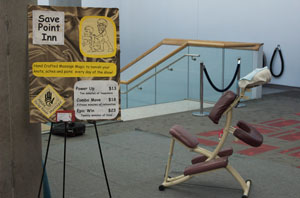 confronted and lectured the photographer at length about how to not be such a creep and to stay away from his daughter, illustrating the potential for uncomfortableness when you get a bunch of young women dressed up in revealing costumes.
confronted and lectured the photographer at length about how to not be such a creep and to stay away from his daughter, illustrating the potential for uncomfortableness when you get a bunch of young women dressed up in revealing costumes.
One group who seemed oblivious to the divide between anime and non-anime cosplayers were the protesters in attendance for most of the convention. Carrying signs that said “JESUS SAVES FROM HELL” and yelling at everyone over bullhorns about how we were all going to hell, they constantly reminded us how much they disapproved, regardless of whether we were dressed up as Yoko from Gurren Lagann or Morrigan from Darkstalkers. FanimeCon attendees took it in stride, with a number of people posing next to the protesters for photos.
Hell was something of an ongoing theme for the weekend, as the Anime Hell video collage show played to a packed house on Saturday night. Anime Hell started years ago as a collection of oddball video clips and these days it makes regular appearances at conventions across the country. Despite the name, there wasn’t much anime to be found in the show. Instead, viewers were treated to gratuitously violent safety videos, clips from low budget ninja movies and Japanese game shows, and a video of a kid ranting about the difficulties of watching anime on Youtube. A short segment dedicated to the recently deceased Carl Macek elicited absolutely no response from the audience, proving that anime fans are either incredibly heartless, or just that most anime fans today have absolutely no idea who he was.
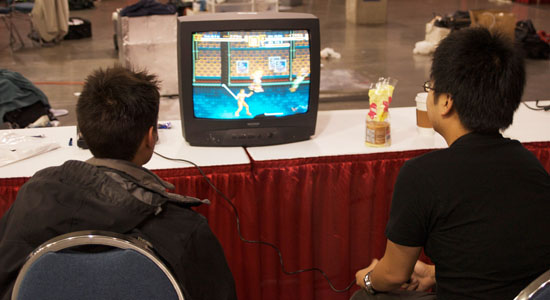
One wonders why FanimeCon doesn’t change its focus and become a general purpose nerd and Japanese culture convention, as it’s obvious that anime is no longer the main draw for many attendees. It seems clear that as the Western anime industry continues to shrink and more companies go under, anime conventions will be forced to fill their programming schedules and guest rosters with activities and people who have no relation to Japanese animation. At what point does the name FanimeCon become silly, considering how little of the con actually concerns anime?
I honestly couldn’t tell you, so instead I’ll give you a bit of advice: If you happen to attend next year’s FanimeCon, do yourself a favor and skip the McDonalds and convention center food. Take a short walk down First Street and check out The Tandoori Oven; it’s cheap, healthy and easily the best food I’ve ever had at a convention.
—————————–
Sean O’Mara grew up in a time when anime in the United States meant $40 VHS tapes or 7am showings of Sailor Moon. He firmly believes that the quality of anime peaked sometime in the late 1980s, and as result he doesn’t have much to watch these days. With all that spare time, he writes for colonydrop.com, an anime website as controversial as it is pink.


